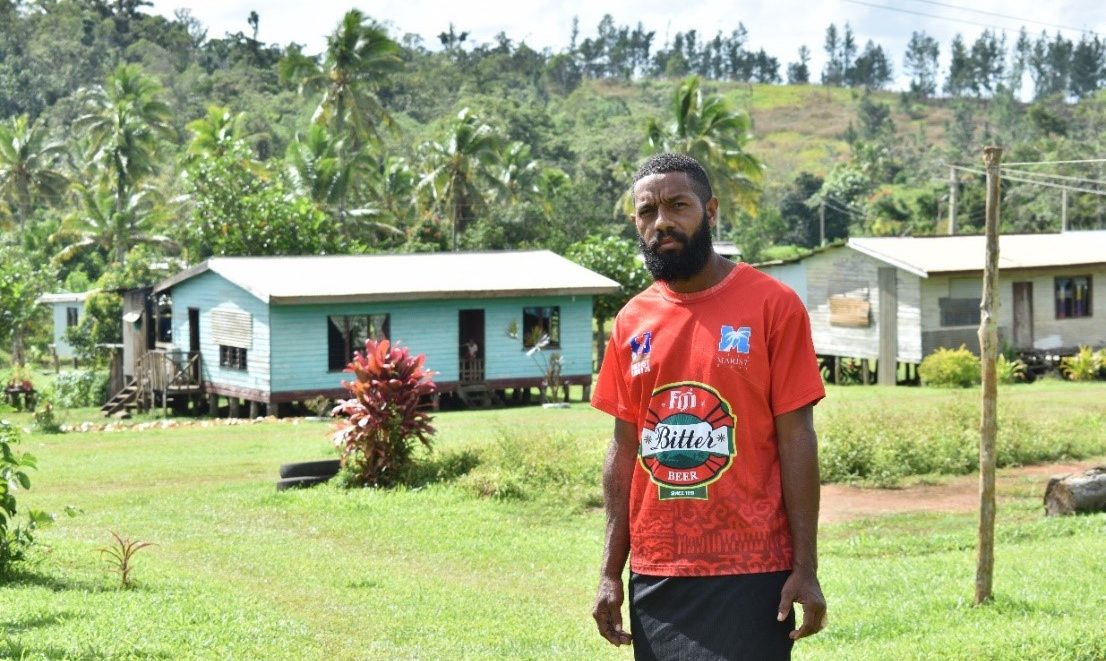
Buavou Village in Seaqaqa, Macuata is home to more than 35 families, and it’s one of the communities in the Northern division that was severely affected by Tropical Cyclone Yasa in December 2020.
Ever since the villagers have been briefed by their Community Leader on the importance of keeping safe during disasters.
In an effort to ensure disaster readiness, Village Head Akeimi Cadramaicake attended a two-day Disaster Risk Reduction and Climate Resilience Training in June this year.
The training was organized by Save the Children Fiji’s Child Centred Disaster Risk Reduction (CDRR) Project team and facilitated by Northern Project Officer Alita Goneva.
The eye-opening experience provided 30-year-old Akeimi an opportunity to learn about proper disaster planning, disaster management, and disaster recovery.
Akeimi said the main component of the training was how to better prepare his community for a disaster.
“I very much liked the training because we learn the importance of determining the best evacuation routes for my villagers, locating the best safe places to shelter, assembling a disaster supply kit in case of injuries, and the need to be well trained in first aid.”
He further added that these were some of the lessons he shared with his community and the whole village also worked together on how to implement such actions.
The training by the CDRR Project team also incorporated the importance of positive discipline.
This was an area that needed attention according to the Buavou village head.
“I have a responsibility to ensure children are nurtured well by their parents,” he said.
Akeimi shared that some children did not grow up with their biological parents but instead lived with guardians such as their grandparents or a relative.
“It’s important to keep children safe and provide for them because they are precious gifts from God. I learned that it takes a village to raise a child and that is what I am encouraging in my community”.
Akeimi said immediately after the training he gathered his villagers in a hall and briefed them on the importance of having a child attend school, the proper environment needed to help them thrive, and the protection needed to keep children safe.
“It’s good for parents to attend such training as well so we are aware of our responsibilities towards children” he added.
It was also noted that the students in the village were some of the children that received the Go-Bag Kits earlier this year. Together with the training provided this both boosted the efforts of villagers to become disaster resilient and prepare well for any natural disasters.
The Village Head said the children were happy with their kits as the items inside were put to good use such as the torch that helped students complete their homework when there was a power disruption at night and the first aid kit was used to treat injuries.
“This all was timely and I thank Save the Children Fiji for the training and the Go-Bag Kits for the children. They loved it. Vinaka Vakalevu”.
The provision of the Go-Bag Kits and training was made possible by Save the Children Fiji’s Child-Centred Disaster Risk Reduction (CDRR) project with support from Save the Children New Zealand (SCNZ) and funding from the New Zealand Ministry of Foreign Affairs and Trade.
The CDRR project began field implementations in March this year and is perceived to have reached about 14,377 beneficiaries through various activities. Some of these activities include the distribution of Go-Bag kits to 3417 student families thereby benefiting approximately 13,668 individuals; 214 teachers and staff received PPEs to keep them safe from the Covid-19 pandemic after school reopening.
